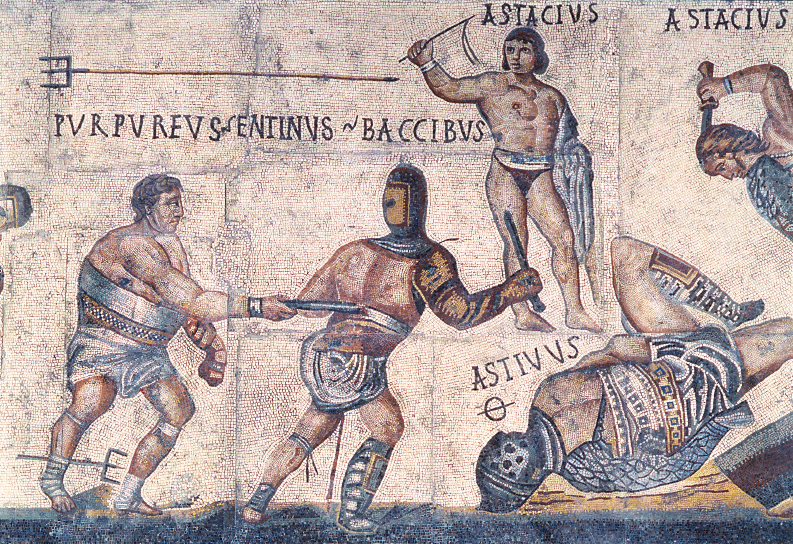Understanding World Societies:
Printed Page 168
> How did the emperors respond to political, economic, and religious issues in the third and fourth centuries?
TThe prosperity and stability of the second century gave way to a period of domestic upheaval and foreign invasion in the Roman Empire that historians have termed the “crisis of the third century.” Trying to repair the damage was the major work of the emperors Diocletian (r. 284–

Gladiator Mosaic
Made in the first half of the fourth century C.E., this mosaic from an estate outside Rome includes the name of each gladiator next to the figure. At the top a gladiator stands in a victory pose, while the fallen gladiator at the bottom is marked with the symbol Ø, indicating that he has died in combat. Many of the gladiators in this mosaic, such as those at the left, appear less fit and fearsome than the gladiators depicted in movies, more closely reflecting the reality that gladiatorial combat was a job undertaken by a variety of people. (Galleria Borghese, Rome, Italy/Scala/Art Resource, NY)
Made in the first half of the fourth century C.E., this mosaic from an estate outside Rome includes the name of each gladiator next to the figure. At the top a gladiator stands in a victory pose, while the fallen gladiator at the bottom is marked with the symbol Ø, indicating that he has died in combat. Many of the gladiators in this mosaic, such as those at the left, appear less fit and fearsome than the gladiators depicted in movies, more closely reflecting the reality that gladiatorial combat was a job undertaken by a variety of people. (Galleria Borghese, Rome, Italy/Scala/Art Resource, NY)